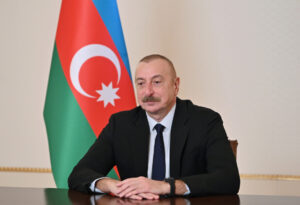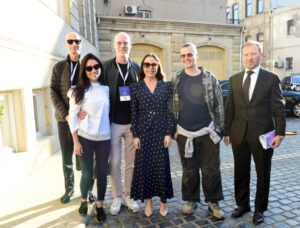Azerbaijan Commemorates 33rd Anniversary of the Garadaghly Tragedy

Baku, The Gulf Observer: The Garadaghly massacre, one of the darkest episodes in Azerbaijan’s history, remains a symbol of cruelty and inhumanity. On February 17, 1992, during the occupation of several Azerbaijani villages by Armenian armed forces, Garadaghly village, located 13 kilometers west of the Khojavand district center, became the site of one of the most brutal genocidal acts against Azerbaijan’s civilian population.
The violence against Garadaghly’s inhabitants was part of a broader campaign by Armenian armed groups beginning in November 1991. These groups besieged and isolated the Azerbaijani villages in the mountainous Karabakh region, committing numerous atrocities including massacres, looting, and arson. Among the bloodiest acts was the Garadaghly tragedy, where entire families were wiped out, and the village was left in ruins.
Key Events Leading to the Tragedy:
- November 24, 1990: Three villagers were murdered by Armenian militants near the Khojavand-Khankendi road.
- January 9, 1991: An Armenian attack on a UAZ vehicle traveling to Garadaghly killed one person and injured four others, two of whom later died from their wounds.
- March 8, 1991: Two villagers were brutally killed near Garadaghly.
- June 28, 1991: Six villagers were burned alive at a farm near the village.
- September 8, 1991: Armenian militants opened fire on a passenger bus traveling from Aghdam to Garadaghly, killing eight passengers.
- January 8, 1992: Another Azerbaijani was murdered near Garadaghly, and Armenian forces stole nearly 100 sheep.
In the aftermath of the violence, 118 people from Garadaghly were taken hostage, 33 of whom were executed. The Armenian forces discarded the bodies of the slain and wounded in a farm pit, burying them there. Of the hostages, 68 were killed, and 50 were freed under difficult circumstances. Among the survivors, 18 later died from severe injuries, including five women.
The massacre left Garadaghly devastated. Of the village’s 200 homes, the cultural center, the school, the hospital, and various historical monuments were destroyed. With a population of approximately 800, the tragedy resulted in 91 deaths—one in every ten villagers—and the orphaning of 146 children. Two families lost four members each, while 43 families lost their breadwinners.
The genocide committed in Garadaghly is not only a crime against Azerbaijan but also a grave violation of human rights and international law. The international community is urged to recognize the tragedy and take steps to prevent such atrocities from occurring in the future.
Following the liberation of Garadaghly and other occupied villages, Azerbaijan has sought to restore historical justice and honor the martyrs of the Garadaghly massacre. The Khojavand District Executive Authority has been proactive in raising awareness of the tragedy, producing several documentaries such as “Genocide: Garadaghly,” “Genocide Garadaghly: Continues…” (available in Azerbaijani, Russian, English, and French), and “Garadaghly, Struggle.” Additionally, the book “Garadaghly Genocide Through the Eyes of Witnesses” was published to provide firsthand accounts of the massacre.
In honor of the victims, memorial complexes have been constructed in Yeni Garadaghly, Yeni Khojavand, and the Nargiztepe area. These sites serve as a poignant reminder of the lives lost in this dark chapter of Azerbaijan’s history and the continuing struggle for global recognition of the Garadaghly genocide.


